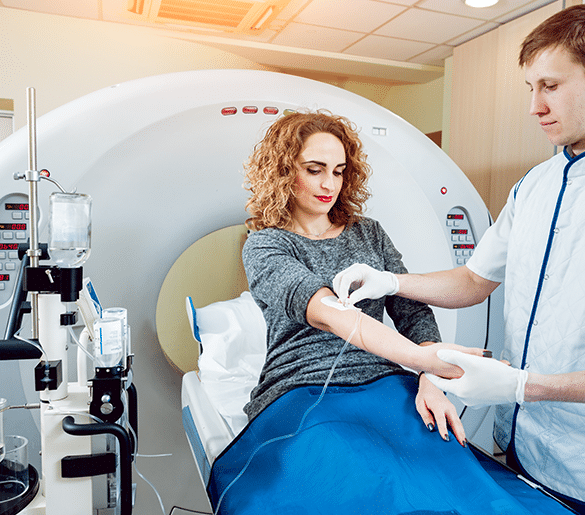Introduction
Portable dental units have become an essential tool for dentists providing mobile services, community outreach, and on-site dental care. Regular maintenance and sanitation of these units are crucial for ensuring optimal performance, patient safety, and longevity of the equipment. This article provides a comprehensive guide on maintaining and sanitizing your portable dental unit effectively.
Definition
A Portable Dental Unit is a compact, mobile device designed to provide dental care in remote locations, mobile clinics, or emergency settings. It typically includes essential dental equipment such as an air compressor, suction system, handpiece connections, and a water supply, enabling dentists to perform basic to advanced procedures outside traditional clinics. These units enhance accessibility to dental services, especially in underserved areas.
Importance of Regular Maintenance and Sanitation
Ensuring Optimal Functionality:
Portable dental units consist of multiple components, including compressors, suction systems, water lines, and handpieces. Regular maintenance helps prevent malfunctions that can disrupt procedures and compromise patient care.
Preventing Cross-Contamination:
Dental procedures expose equipment to saliva, blood, and other biological contaminants. Proper sanitation minimizes the risk of infections and ensures compliance with health regulations.
Extending Equipment Lifespan:
Routine maintenance prevents wear and tear, reducing the likelihood of expensive repairs or replacements. Proper care enhances the durability of components, ensuring continued efficiency.
Step-by-Step Maintenance Guide
1. Inspecting Components Before and After Use
Before using your portable dental unit, perform a thorough inspection of all components. Check for:
- Leaks in air and water lines
- Proper handpiece functionality
- Adequate suction power
- Battery or power supply stability
After each use, inspect for any visible signs of wear or contamination.
2. Cleaning Handpieces and Attachments
Handpieces and attachments require meticulous cleaning and lubrication to function optimally. Follow these steps:
- Remove handpieces from the unit.
- Use a brush and warm water to clean debris.
- Autoclave or use chemical disinfectants as per manufacturer guidelines.
- Lubricate moving parts before storage.
3. Maintaining the Waterlines
Waterlines can harbor bacteria and biofilm, leading to potential infections. To maintain water quality:
- Flush waterlines with clean water after each patient.
- Use antimicrobial solutions weekly to prevent biofilm buildup.
- Replace water filters regularly to ensure purity.
4. Caring for the Suction System
The suction system removes debris and fluids, preventing contamination. Keep it functioning efficiently by:
- Flushing the suction lines with disinfectant at the end of each day.
- Inspecting and replacing suction tips regularly.
- Cleaning the filters to remove trapped debris.
5. Checking the Compressor and Air System
The compressor provides the necessary power for dental procedures. To ensure its efficiency:
- Drain moisture from the compressor tank daily.
- Clean the air filters weekly to maintain airflow quality.
- Check for any leaks in the tubing and connections.
Sanitization Protocols for Infection Control
1. Surface Disinfection
All surfaces of the portable dental unit should be wiped down with EPA-approved disinfectants after each patient visit. Pay special attention to:
- Control panels
- Handpiece holders
- Tubing and hoses
- Foot pedals
2. Use of Disposable Barriers
Disposable barriers on high-contact areas, such as control panels and handpiece holders, reduce the risk of contamination. Replace these barriers between patients to maintain hygiene.
3. Proper Handling of Waste
Dispose of used gloves, suction tips, and disposable items in designated biohazard waste containers. Follow local regulations for medical waste disposal.
4. Sterilization of Reusable Instruments
All reusable instruments should undergo thorough sterilization using autoclaves or chemical disinfectants. Follow these steps:
- Rinse instruments to remove debris.
- Use ultrasonic cleaners for deeper cleaning.
- Autoclave instruments as per recommended cycles.
Troubleshooting Common Issues
1. Low Suction Power
If the suction system weakens, check for clogged filters or blocked tubing. Flush the system with disinfectant and replace filters if needed.
2. Waterline Blockages
Slow water flow may indicate mineral buildup. Use a descaling solution to remove deposits and maintain smooth water flow.
3. Air Leaks
Hissing sounds or reduced air pressure indicate leaks. Inspect tubing connections and tighten or replace faulty components.
4. Unusual Noises from the Compressor
If the compressor makes abnormal noises, check for loose fittings, debris in the motor, or inadequate lubrication. Regular maintenance prevents mechanical failures.
Best Practices for Long-Term Maintenance
- For cleaning and maintenance routines, according to the manufacturer’s instructions.
- Train staff members on proper equipment handling and sanitation protocols.
- Keep a maintenance log to track servicing and replacements.
- Store the unit in a clean, dry area when not in use to prevent contamination and damage.
Future Trends of Portable Dental Units Market
Growing Demand for Mobile Dentistry:
The demand for portable dental units is rising as mobile dentistry becomes more prevalent. With an increasing need for dental care in remote areas, nursing homes, and schools, these compact and efficient units are essential for reaching underserved populations.
Technological Advancements:
Advancements in dental technology, including wireless connectivity, digital imaging integration, and battery-powered units, are enhancing the efficiency of portable dental equipment. These innovations improve diagnosis and treatment capabilities, making portable units more effective and user-friendly.
Increasing Adoption in Developing Regions:
Many developing countries are witnessing a surge in demand for portable dental units due to limited access to traditional dental clinics. Governments and NGOs are investing in mobile dental care solutions to bridge the gap in oral healthcare services.
Integration of AI and Teledentistry:
Artificial intelligence (AI) and teledentistry are revolutionizing portable dental care. AI-powered diagnostic tools and virtual consultations allow dentists to assess and guide treatments remotely, improving patient outcomes while reducing travel needs.
Focus on Lightweight and Ergonomic Designs:
Manufacturers are focusing on designing lightweight, compact, and ergonomically optimized portable dental units. These improvements enhance portability and ease of use for dental professionals, making it easier to provide care in various environments.
Growth Rate of Portable Dental Units Market
According to Data Bridge Market Research, the size of portable dental units market was estimated at USD 784.08 million in 2024 and is expected to grow at a compound annual growth rate (CAGR) of 5.20% from 2025 to 2032, reaching USD 3,078.18 million.
Conclusion
Proper maintenance and sanitation of your portable dental unit are vital for ensuring consistent performance, patient safety, and compliance with health regulations. By following a structured cleaning and maintenance routine, you can extend the life of your equipment, minimize repair costs, and provide high-quality dental care efficiently. Implement these best practices to keep your portable dental unit in peak condition, ensuring a seamless and safe experience for both patients and practitioners.



